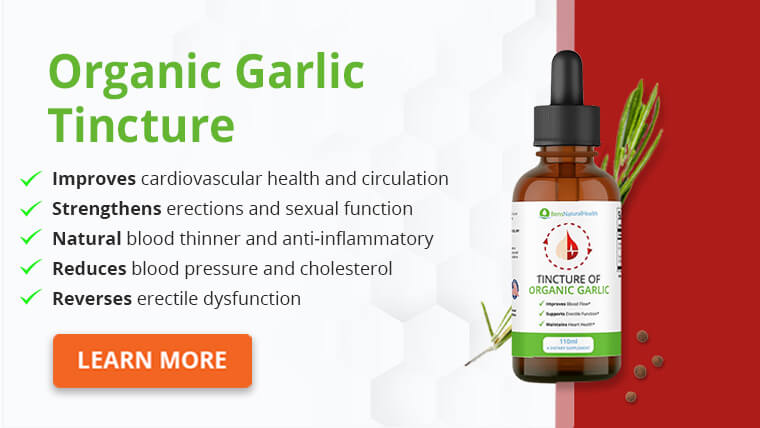- Can you lower your blood pressure with exercise?
- Exercises that lower blood pressure
- What is the best exercise to lower high blood pressure?
- How long does it take for exercise to lower blood pressure?
- What exercises should be avoided with high blood pressure?
- Is it safe to exercise with high blood pressure?
- 5 natural ways to lower blood pressure
- Conclusion
- Source
Nearly half of Americans (47%, or 116 million) have high blood pressure, and only a quarter of them have it under control.
Uncontrolled high blood pressure is linked to many health risks, including coronary heart disease and stroke, which are the leading causes of death in the United States.
If you have high blood pressure (hypertension) or want to prevent getting it, exercise is one of the best ways.
It is an undeniable fact that exercise helps maintain a healthy blood pressure range in everyone, regardless of age, gender, and health conditions.
Plus, you don’t have to be an athlete to lower your blood pressure!
There are plenty of exercises that give a blood pressure lowering effect, and you can simply incorporate them into your daily routine.
This article will discuss and answer your questions about exercise and blood pressure.
Can you lower your blood pressure with exercise?
Yes. Exercise lowers blood pressure. And your next question might be: how is blood pressure in the body affected by exercise?
Exercise can lower your blood pressure by strengthening your heart and blood vessels. During exercise, your heart pumps harder and faster (heartbeat increases) to supply more oxygen to muscles.
This results in a transient increase in blood pressure. However, as you (and your heart) exercise more, your heart grows stronger to execute its task efficiently. The same goes for blood vessels.
Blood vessel stiffness reduces (becomes more tensile), making blood flow more easily. The overall effect is a lower resistance in the blood circulation system, which results in lower blood pressure.
If you have hypertension, exercise helps to lower your blood pressure back to a healthy range.
If you don’t have high blood pressure, exercise still lowers your blood pressure, thus protecting you from the disease.
A report showed significant blood pressure reduction in hypertensive people (4-8 mmHg) and normotensive (2-4 mmHg) who underwent various types of exercises.
Sometimes, high blood pressure can be so stubborn that even blood pressure medications won’t help. This is called resistant hypertension.
Thankfully, exercise comes to the rescue. Researchers from a randomized clinical trial discovered that undergoing aerobic exercises for 12 weeks lowers systolic blood pressure by 7.1 mmHg. The cardiorespiratory function was also improved in the exercise group compared with the control group.

Exercises that lower blood pressure
The American Heart Association recommends at least 150 minutes of moderate-intensity exercises for adults each week. Meanwhile, children and adolescents should have at least 1 hour of physical activity every day.
Examples of these moderate-intensity exercises are:
- Brisk walking or jogging
- Bicycling
- Swimming
- Dancing
- Gardening and yard work
- Moderate to heavy housework
Don’t worry about squeezing time out from your busy schedule to exercise. You can break down the 150 minutes into smaller fragments, like five 30-minute sessions to be done over 5 days spreading throughout the week.
Otherwise, you may opt for a shorter duration but higher intensity exercise like:
- Hiking
- Rapid stair climbing
- Aerobic dancing
- Cross-country skiing
If you want something more technical, you can try these body workouts.
They have all been proven to lower blood pressure significantly in various research studies:
- Aerobic or “cardio” exercises, which include any physical activities that increase your heart rate and speed up the body’s use of oxygen. Examples are jump squat, burpee, commando, mountain climber, and tuck jump.
- Isotonic or “dynamic” exercises. In these exercises, your muscle contraction is maintained at the same tension over a range of movements. Examples are squats, pushups, pullups, bench presses, and deadlifts.
- Isometric or “static” exercises. In these exercises, you will contract your muscles without actually moving. Examples are holding when you are squatting and plank.
What is the best exercise to lower high blood pressure?
All exercises help lower high blood pressure and improve general health, but which is the best exercise to lower blood pressure?
Recently, researchers conducted a randomized controlled trial to find out the answer.
55 males with hypertension joined the study. Half of them took aerobic exercises, while the other half underwent combined aerobic and resistance exercises.
After 12 weeks, blood pressure was reduced to a similar extent in both groups. But the combined exercise group showed a lower blood pressure variability, which means the blood pressure is more stable.
Conclusion: combined aerobic and resistance exercises offer greater benefits in lowering and maintaining lowered blood pressure.
The study’s discovery aligns with the American Heart Association’s recommendation:
- To include stretching and flexibility exercises on top of moderate-intensity activities
- To include muscle-strengthening activities (resistance exercises) at least two days a week.
How long does it take for exercise to lower blood pressure?
High blood pressure takes years to develop, and it can take time to get rid of it. Most research studies instruct their participants to exercise for at least 3 months before collecting the result (post-intervention blood pressure), and the results are promising.
Therefore, you would probably need a few weeks, if not months, of exercise to start seeing a reducing trend in blood pressure numbers.
Complementing with other natural ways to lower blood pressure may speed up achieving the goal. We will see these options later in this article.
What exercises should be avoided with high blood pressure?
If you have cardiovascular disease or want to be extra safe, consider dropping exercises that are very intense within a short period of time, such as sprinting or weightlifting.
They raise your blood pressure very quickly and strain your heart and blood vessels.
If you want to try extreme sports like scuba diving or parachuting, you will need a medical certificate from your doctor before doing them.
Is it safe to exercise with high blood pressure?
It is generally OK for people with hypertension to exercise. The only exception is when your blood pressure is severely uncontrolled, i.e., in a hypertensive crisis (blood pressure high than 180/120 mmHg).
In that case, you should stop everything and seek medical attention as soon as possible.
Scientific evidence strongly suggests that physical activity is safe for almost everyone, and its benefits far outweigh the risks.
Ask your healthcare providers if you need clarification on how your preexisting health condition can affect your exercise plans.

5 natural ways to lower blood pressure
For most people, high blood pressure can be managed without relying on medication intake. Here are the top 5 non-pharmacological ways to lower blood pressure:
1. Maintain a healthy body weight
For most adults who are overweight, the goal is to drop 1 kg at least, more if you have obesity. For every 1 kg cut in weight, your blood pressure drops by 1 mmHg.
2. DASH dietary pattern
The Dietary Approaches to Stop Hypertension (DASH) diet is the best dietary plan endorsed by the National Institutes of Health.
The DASH diet essentially promotes eating vegetables, fruits, whole grains, and low-fat dairy products, with reduced intake of saturated and total fat, sugar-sweetened beverages and sweets.
3. Reduce salt intake
The ideal goal is to take less than 1500 mg of salt daily.
4. Increase potassium intake
Daily potassium intake between 3500 to 5000 mg helps lower blood pressure. Examples of potassium-rich sources are leafy greens, beans, nuts, dairy foods, avocados, and bananas.
5. Control alcohol consumption
Men should not drink more than 2 drinks per day, and women should not take more than 1 drink.
In the United States, one drink equals 12 oz of regular beer (5% alcohol), 5 oz of wine (12% alcohol), and 1.5 oz of distilled spirits (40% alcohol)
Conclusion
Exercise lowers blood pressure, and it also brings countless other benefits to your health. It is never too late to start exercising.
Find something you enjoy, mix up your exercise combo, and most importantly, know your limit.
Start with gentle exercises and gradually increase the intensity once your fitness level has gone up. In this way, you can reduce your chances of injury while maintaining good blood pressure.
Explore More







